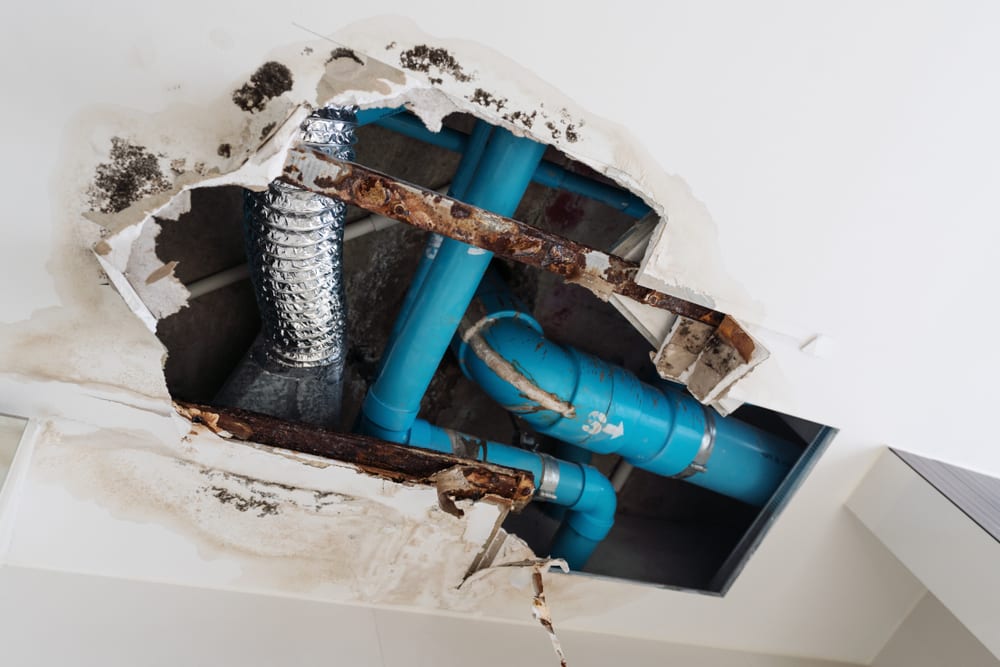
There are a countless number of appliances in your household that rely on incoming water to operate. Ordinary causes of water leaks in homes include malfunctioning water heaters, washing machines, and refrigerators. In addition, the source of a water leak may be a pipe burst or pipe deterioration. To help you avoid the negative consequences of water damage in your house, we have compiled a list of ordinary water leaks and how to fix them.
Table of Contents
What Types of Issues Cause Water Damage?
Damaged Pipes
The pipes behind your walls and ceiling feature a limited life cycle that is dependent on factors such as the type of pipe and water usage patterns. Copper pipes are designed to last for 50 years or more. On the other hand, durable brass pipes are engineered with a lifespan of 70 years or more. If you notice discoloration on your walls or floors, this is a sign of water damage due to a broken water line on your property. Although it may be easy to detect water leaks behind your walls or beneath your property, it is more challenging to detect leaks near your fixtures and appliances.
Check for hidden indicators of water damage in your house near your bathtub, sinks, toilets. It’s important to discover water leaks quickly to prevent damage to your furniture, drywall, wood floors, appliances, and electronics. If you are not able to find water damage near your fixtures, we recommend inspecting your drain lines to confirm that they are in good shape. A small to large sewage leak may have devastating consequences for your household. The most common types of drain pipes include polyvinyl chloride (PVC) and Cast Iron. The standard life cycle of PVC pipes is infinite. On the other hand, the lifespan of cast iron drain lines is 100 years or longer.
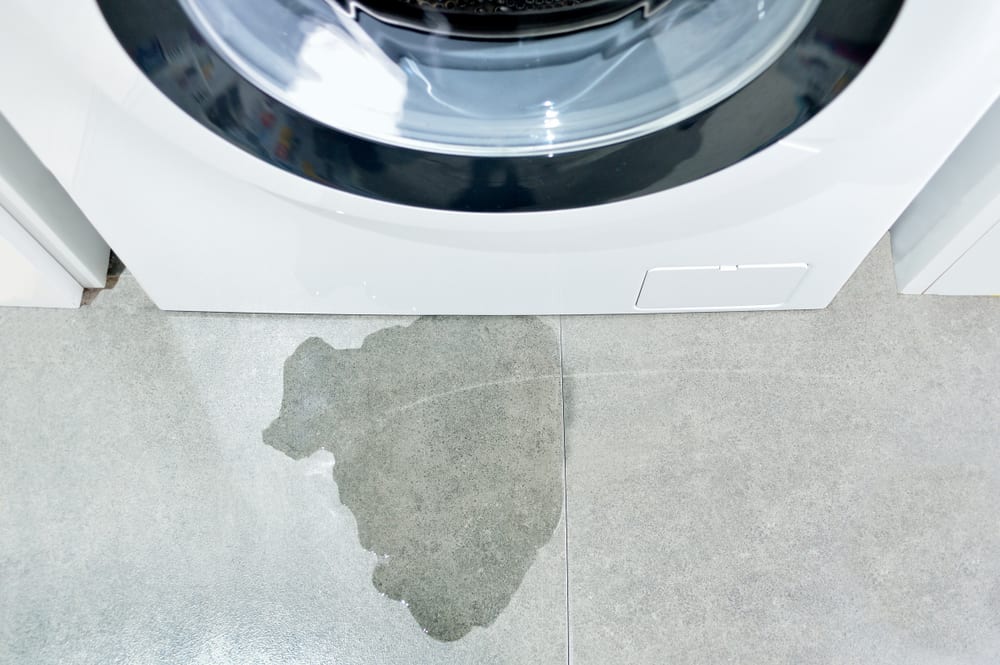 Leaking Washing Machines
Leaking Washing Machines
If you notice a puddle of water beneath your washing machine, this issue may be caused by loose connections. Check the hoses behind the washing machine to ensure the connection to the water supply valves is secure. Next, it’s important to inspect the connections between the machine and hoses to confirm they are tight. In other scenarios, water damage in your house near the washing machine may be caused by a crack or hole in the water supply hoses. The only way to fix a leak from a damaged hose is to purchase a new hose from your local hardware store.
The flooding near your washing machine may be due to loose knobs on your water supply valves. The blue knob is designed to control the circulation of cold water while the red knob is engineered to control the distribution of hot water. If you notice water damage near the washer in your home, the source of this problem may be loose knobs on the water supply valves. Hire a licensed plumber in your area to replace the knobs on the supply valves.
Tips & Insights: How Much Does a Furnace Fan Limit Switch Cost?
Damaged Toilets
Depending on the severity of the leak, a damaged toilet can waste 5 or more gallons of water per minute. If the flush valve at the base of the water tank is loose due to disintegration, a large amount of water will leak into the toilet bowl. This type of toilet leak is hard to detect because it produces minimal noises. To confirm if the flapper valve in your toilet is damaged, lift the lid off the water tank. Next, flush the toilet and perform an inspection of the flapper ball valve while the tank is refilling.
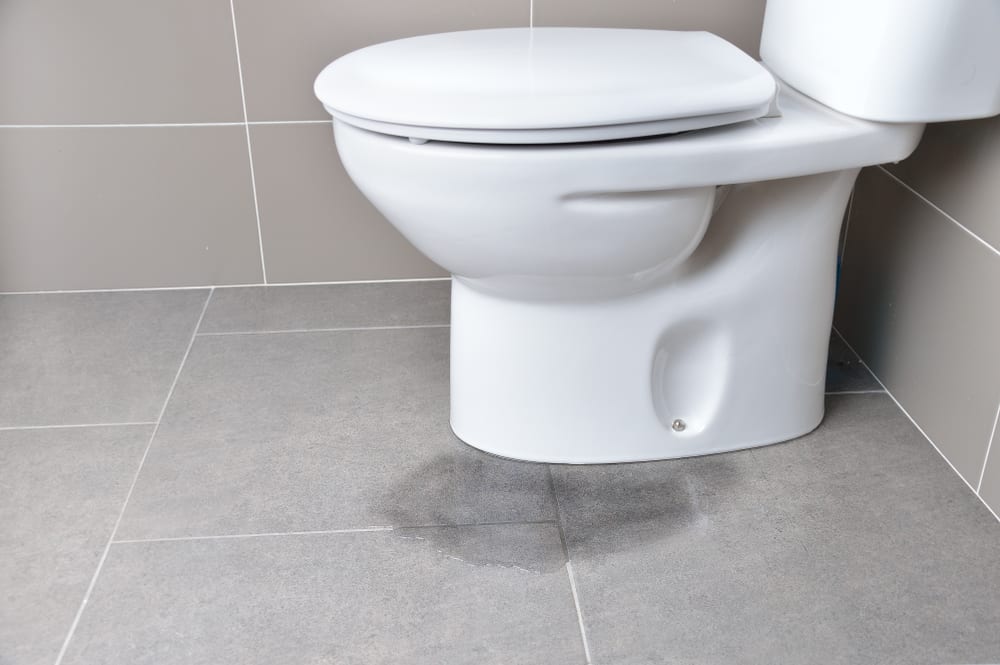 Once the flush or flapper valve is sitting at the bottom of the tank, insert a minimal amount of food dye into the water tank. Wait for a total of 15 to 20 minutes to confirm if the food dye appears in the toilet bowl. If you notice the food dye in the bowl, this is a sign of a toilet leak. To prevent water damage from a leaking toilet, call a certified plumber to replace the flush valve in your toilet.
Once the flush or flapper valve is sitting at the bottom of the tank, insert a minimal amount of food dye into the water tank. Wait for a total of 15 to 20 minutes to confirm if the food dye appears in the toilet bowl. If you notice the food dye in the bowl, this is a sign of a toilet leak. To prevent water damage from a leaking toilet, call a certified plumber to replace the flush valve in your toilet.
The source of a toilet leak may also be a broken fill or ballcock valve in the water tank. If the shut-off valve is unable to close and the float is set to an incorrect height, an excess amount of water will begin to fill the water tank until it reaches the overflow pipe. To confirm if there is a problem with the shut-off valve, you will need to lift the lid off the water tank. Next, inspect the water level and overflow pipe to confirm if the water is being flushed. If water is leaking into the overflow pipe, call a certified technician to prevent water damage in your house.
Water Heater Leaks
A majority of water heater leaks can be attributed to sediment in the hot water tank. If you don’t manually drain your water heater once or twice a year, minerals such as calcium and magnesium will begin to settle at the bottom of the water tank. An excess amount of sediment in a water heater may cause issues such as fluctuating water temperatures, high utility bills, and rumbling noises. As the buildup of calcium and magnesium becomes more severe, the sediment will displace water in the hot water tank. Eventually, corrosion will occur due to the large amount of sediment in the water heater.
Loose inlet and outlet pipe connections may be the source of water damage from a water heater leak. To stop the water leak, grab a wrench and tighten the inlet and outlet connections. In some cases, you may be required to replace a damaged pipe to stop a water leak. Do you notice water running down the wall of your water tank? The source of this type of water heater leak is a damaged temperature and pressure relief valve. This valve is engineered to drain water from the tank when the pressure or temperature becomes too high. To prevent water damage to the floor beneath the water heater, you will need to call a licensed plumber to replace the temperature and pressure relief valve.
Tips & Insights: Why is My Air Conditioner Unit Frozen?
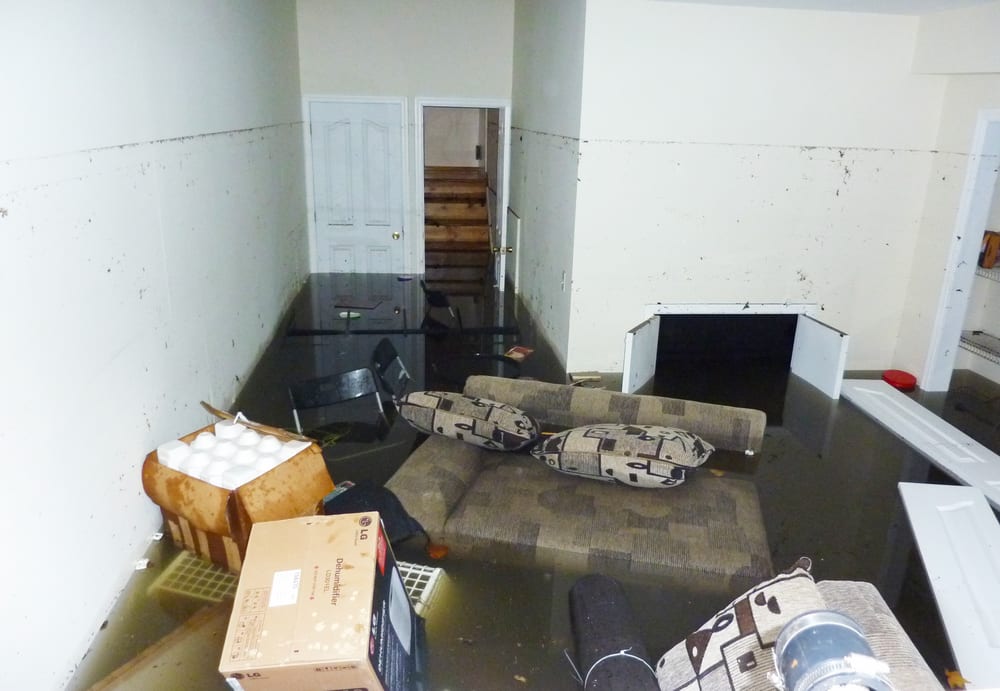 Clogged Sump Pumps & Switches
Clogged Sump Pumps & Switches
If you don’t have a lid installed on your sump pump, the sump pit will become clogged with dirt, dust, and debris. This will cause the mechanical components of the sump pump to become inefficient and clogged. Unfortunately, a large clog may cause the float switch to become inoperable. This switch is engineered to activate and deactivate the sump pump as the water level changes. If your float switch becomes clogged, the sump pump will be unable to protect your basement from the devastating consequences of water damage.
3 Negative Consequences of Water Damage
Structural Damage
An untreated water leak will cause your home to collapse under its own weight. If the leaky pipes are not fixed, the house will begin to sink into the ground. In addition, you may notice cracks on the foundation of your household. Other symptoms of water damage in houses include warped walls and mold growth. Once the foundation is cracked and damaged, the support beans will be unable to support the second floor of your house. To prevent injuries and expensive foundation issues, it’s important to continuously inspect the exterior and interior of your house for water damage.
Tips & Insights: What Are the Benefits of Installing a Heat Pump System?
Mold Growth
Cracks and loose joints behind your walls create the perfect atmosphere for mold and fungi. Although a majority of houses have mold spores, in the walls and ceiling, the total number of spores can be reduced by fixing damaged pipes on your property. If there is an excess amount of mold spores in the air of your household, you may develop long-term health consequences in the future. Mold and fungi thrive in locations with a high quantity of water and moisture. Ordinary symptoms of mold exposure include coughing, congestion, and sneezing. In addition, an individual with pre-existing conditions may have severe medical complications due to mold and fungi in a household.
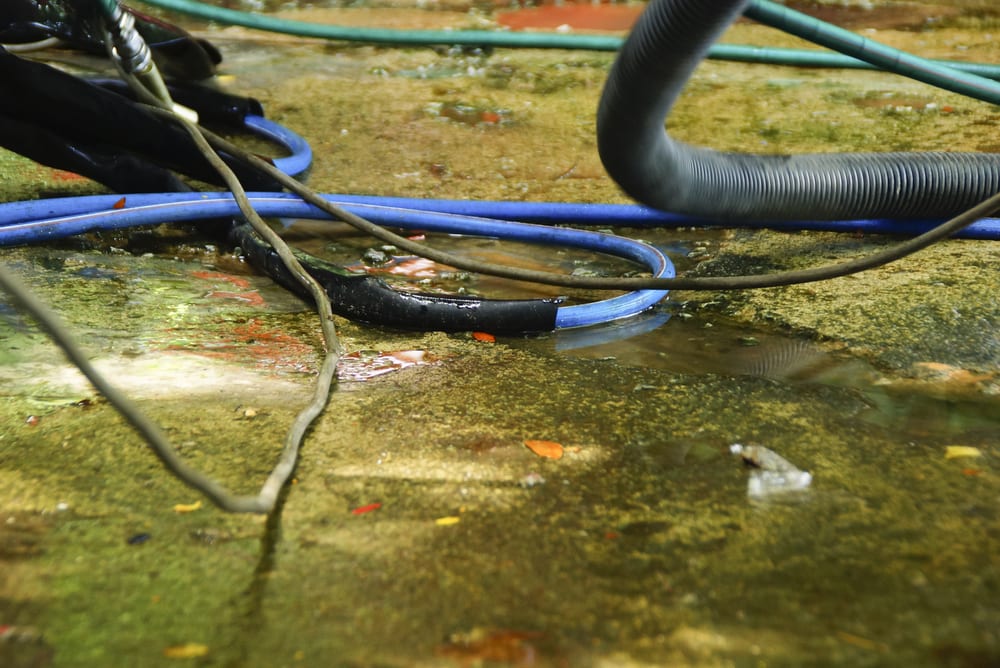 Damage to Electrical System
Damage to Electrical System
Damage to light fixtures and electrical wires behind your walls can occur due to leaking water pipes, fixtures, and appliances in your house. Small to moderate water leaks may cause electrical problems such as shorts, power outages, and house fires. To avoid spending money on a brand new light fixture or wires, it’s important to be familiar with the ordinary signs of water damage and leaks.
If the drywall near an electrical outlet is wet, this is a signal of a burst pipe or loose pipe joint. To avoid damage to your outlet, walk to the electrical panel in your utility closet and deactivate the circuit breaker. Do not touch the light switches near the affected area until the water leak is fixed. It’s important to unplug electronics such as televisions, stereo speakers, and lamps to prevent water damage. To receive assistance with a water leak, give our team of certified plumbers a call by phone at (904) 217-5694. Fenwick Home Services offers reliable plumbing and HVAC services for malfunctioning air conditioners, broken sump pumps, clogged drains, and inefficient furnaces. Our company was established in 1969 and is dedicated to providing fast and efficient plumbing, heating, and air conditioning services in Jacksonville and other areas of Florida.
Tips & Insights: 3 Main Causes of Sewer Backups & Ways to Fix

